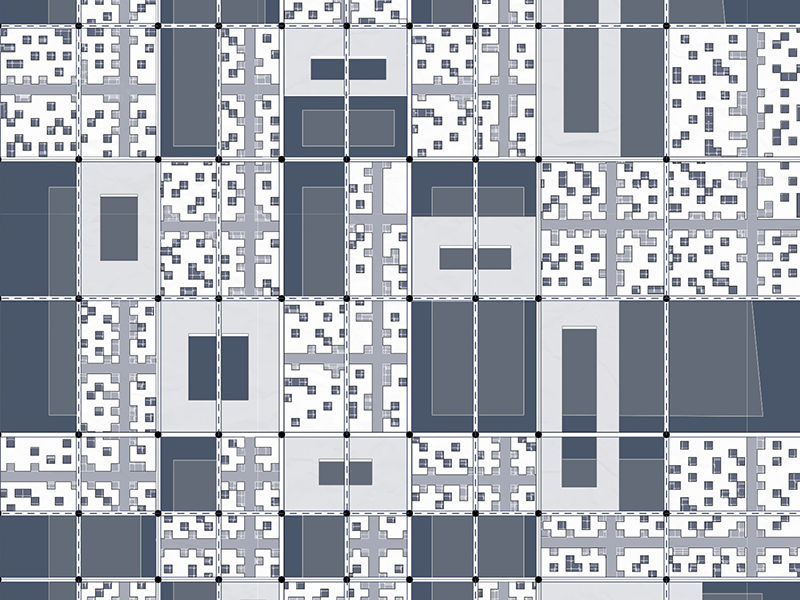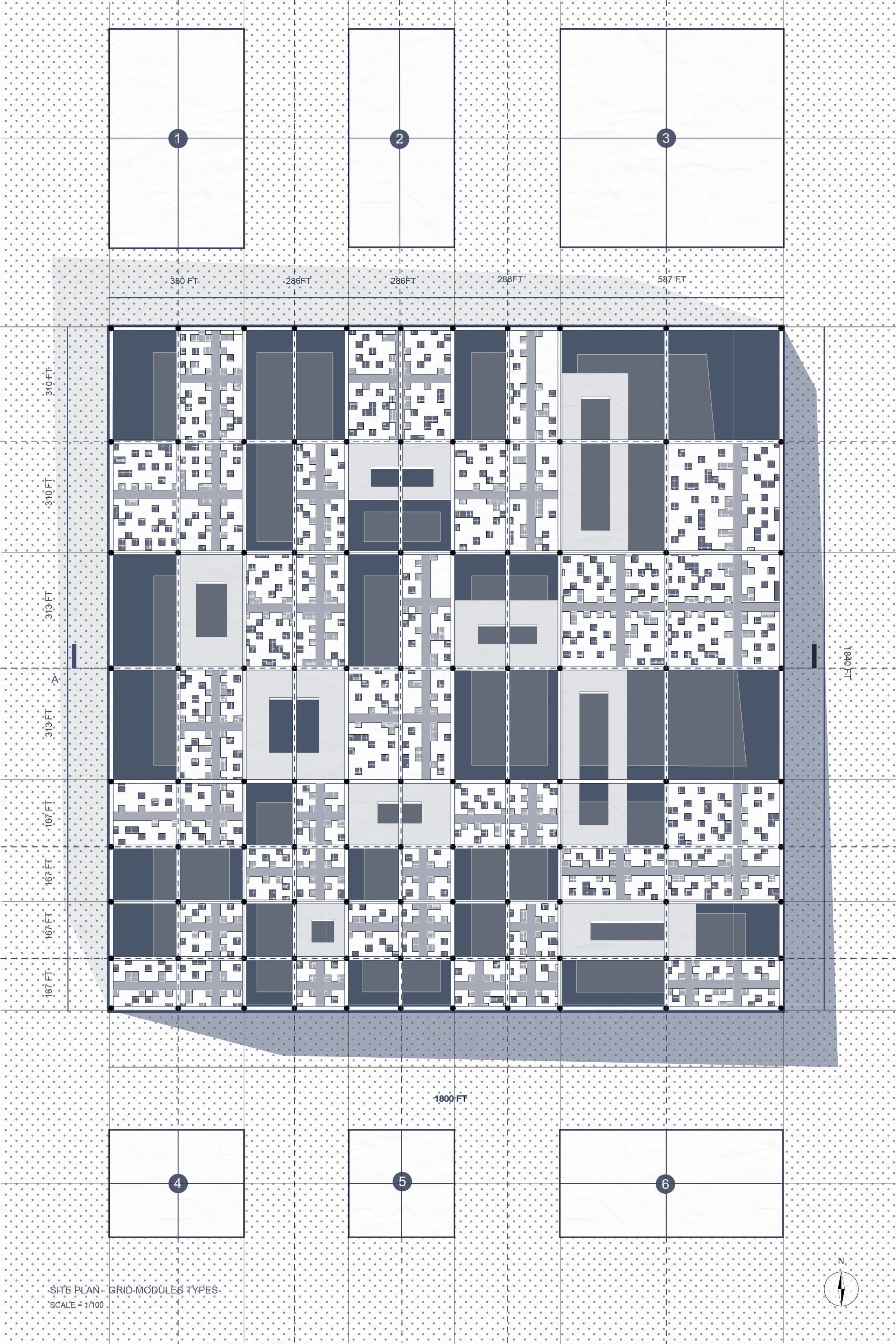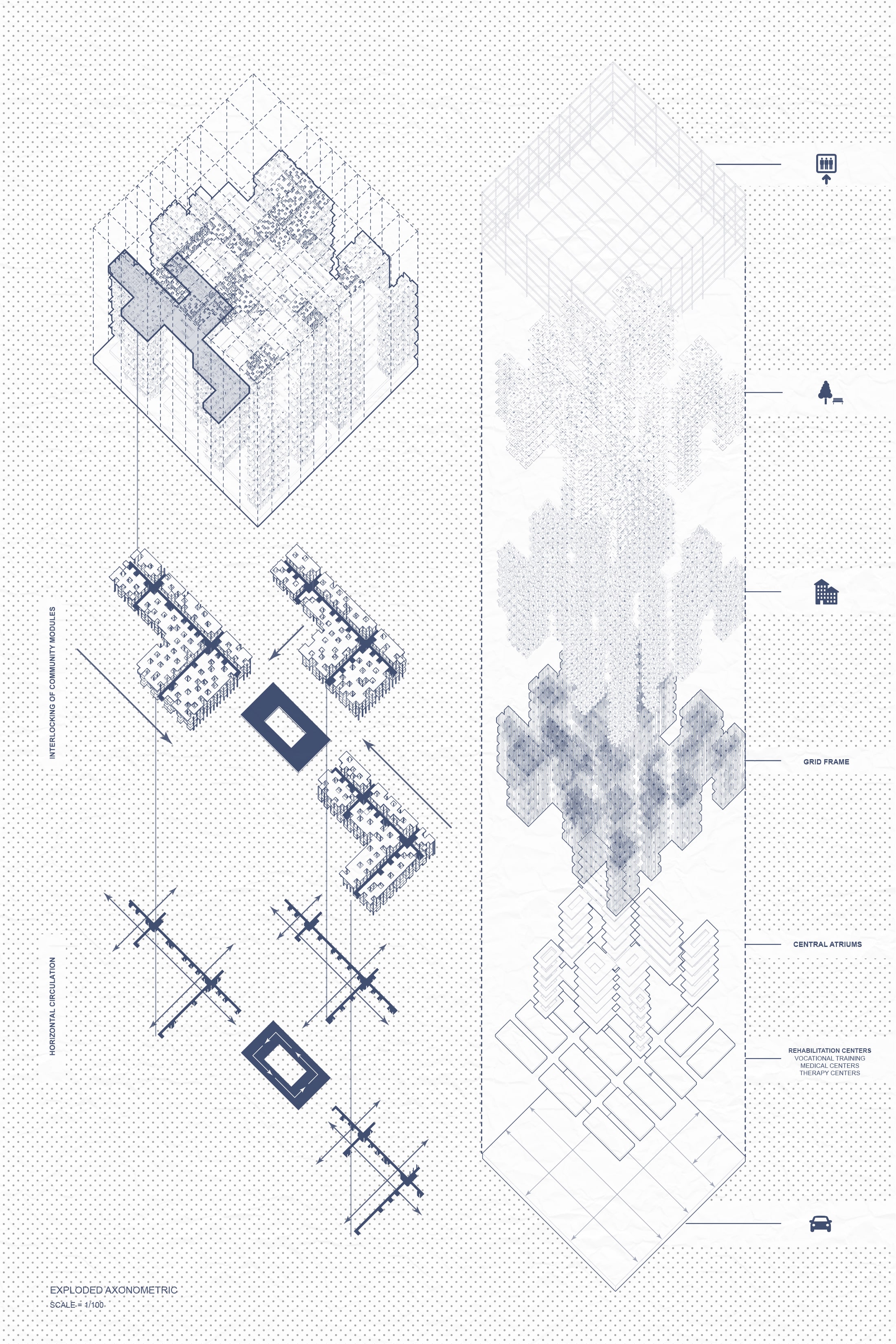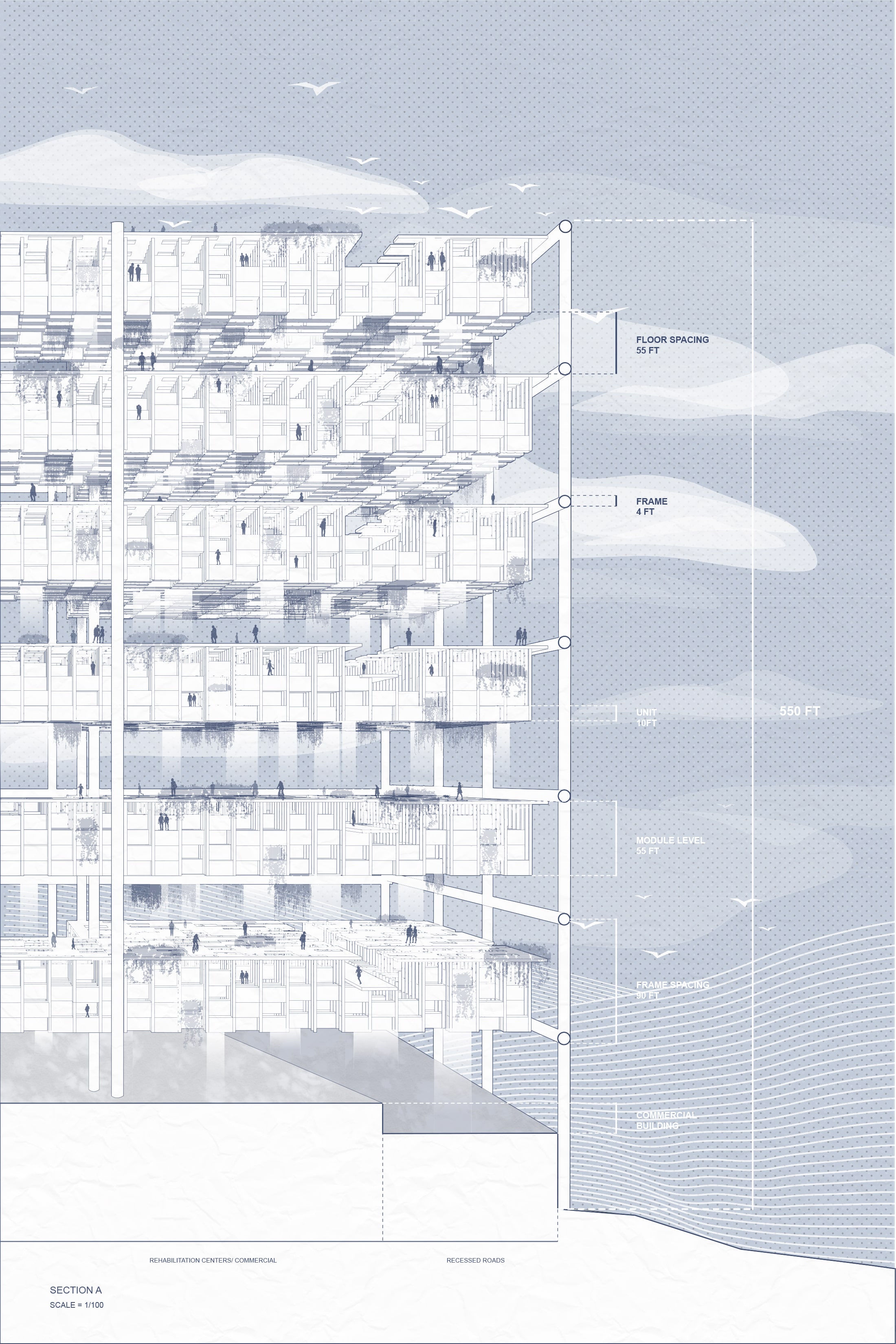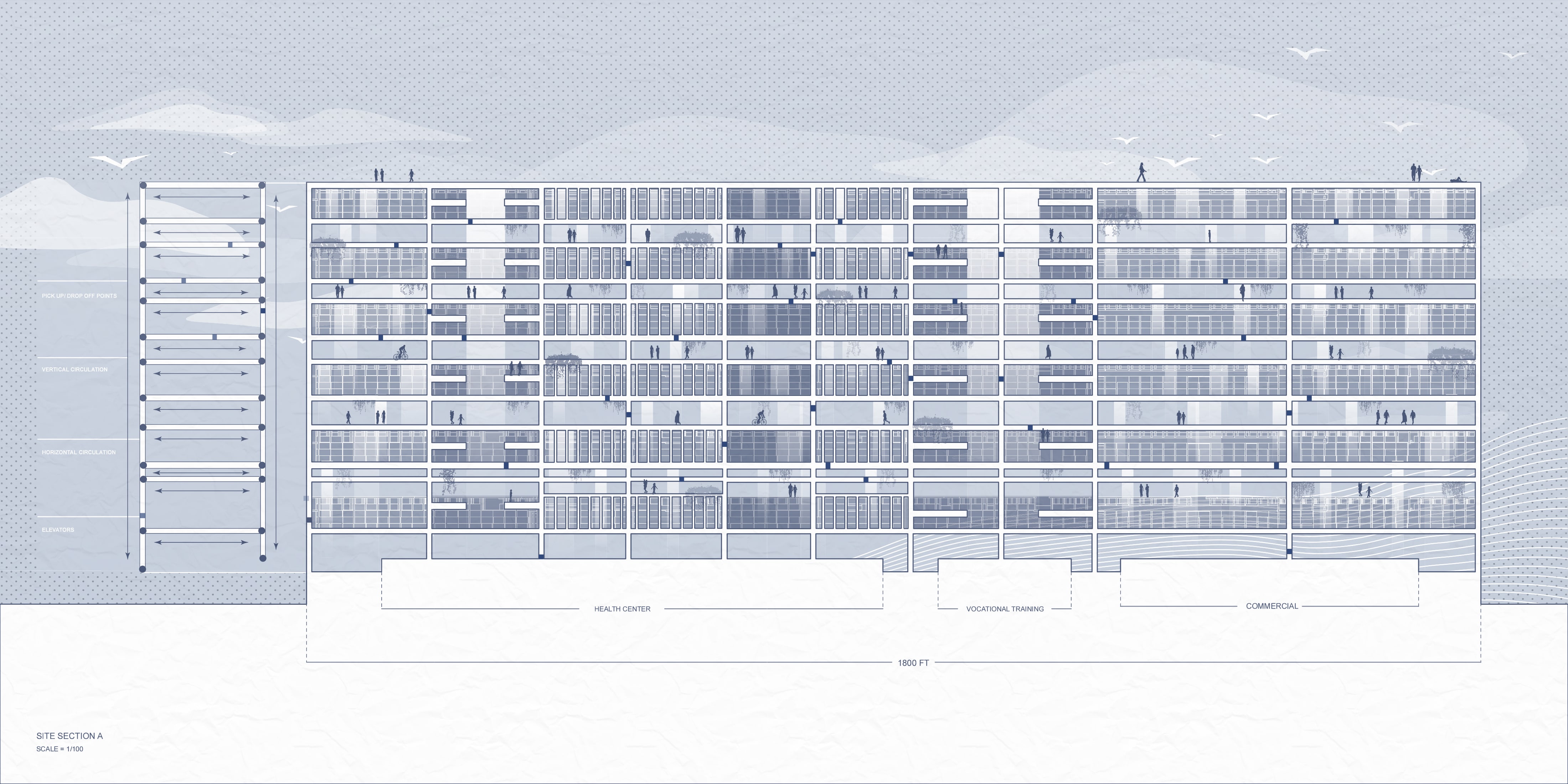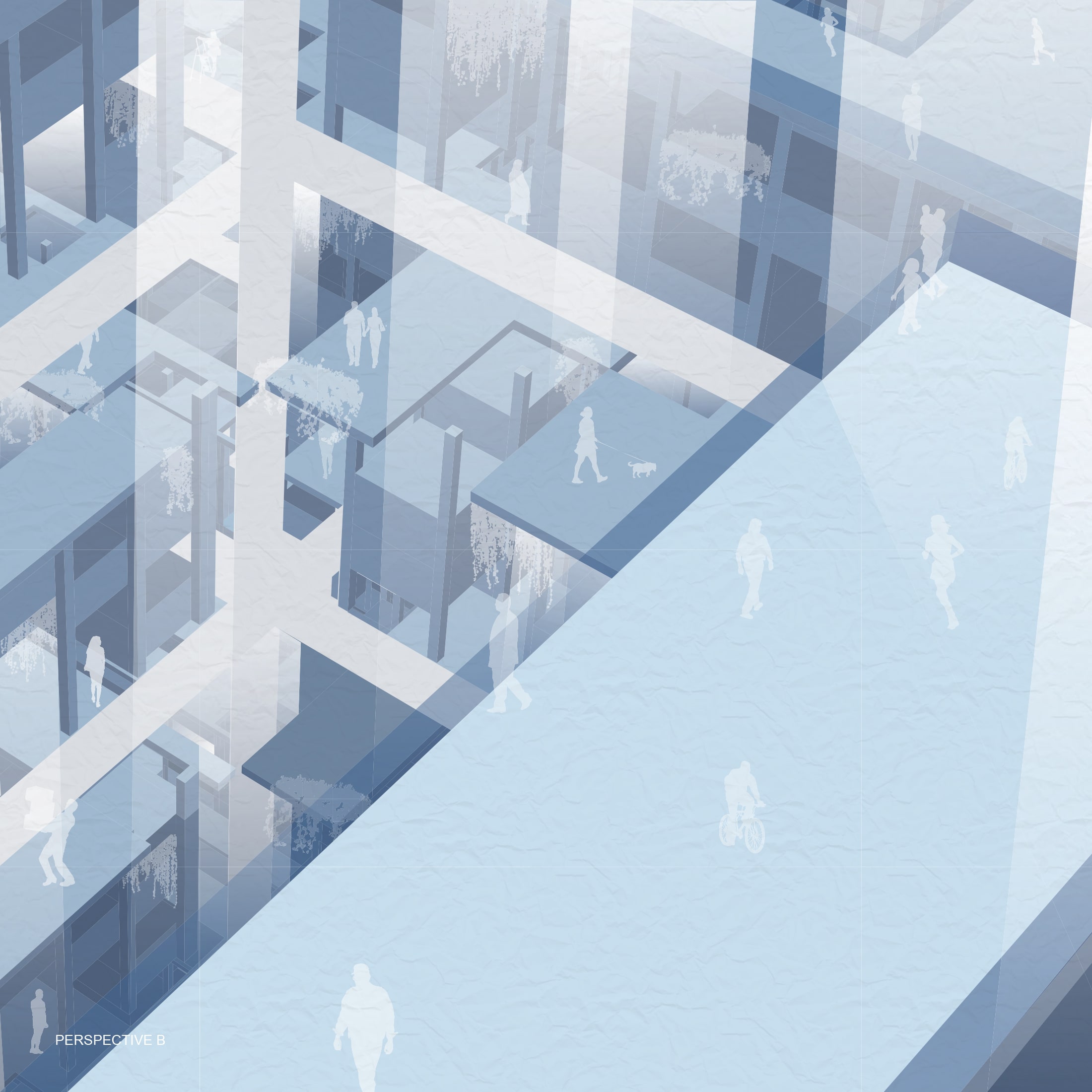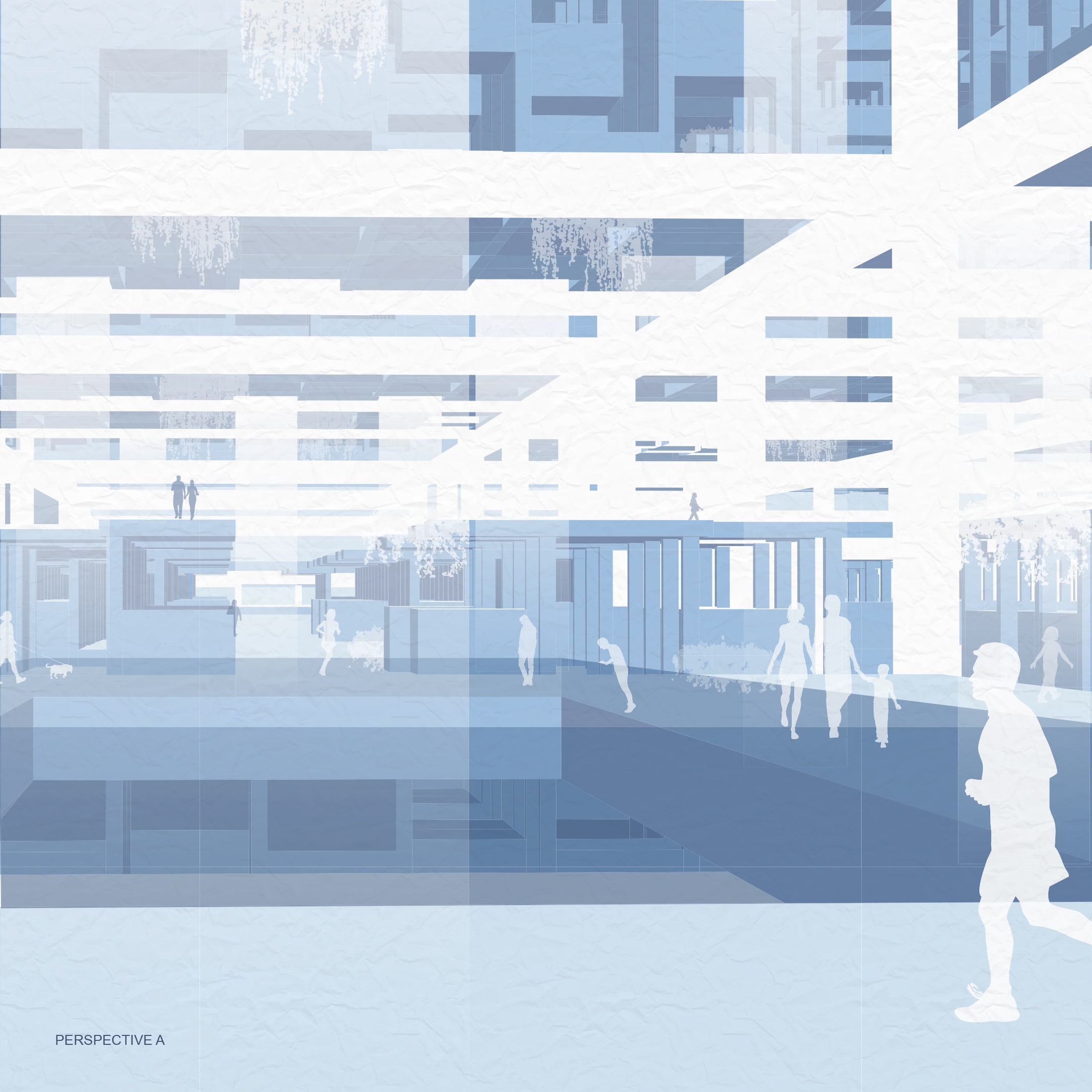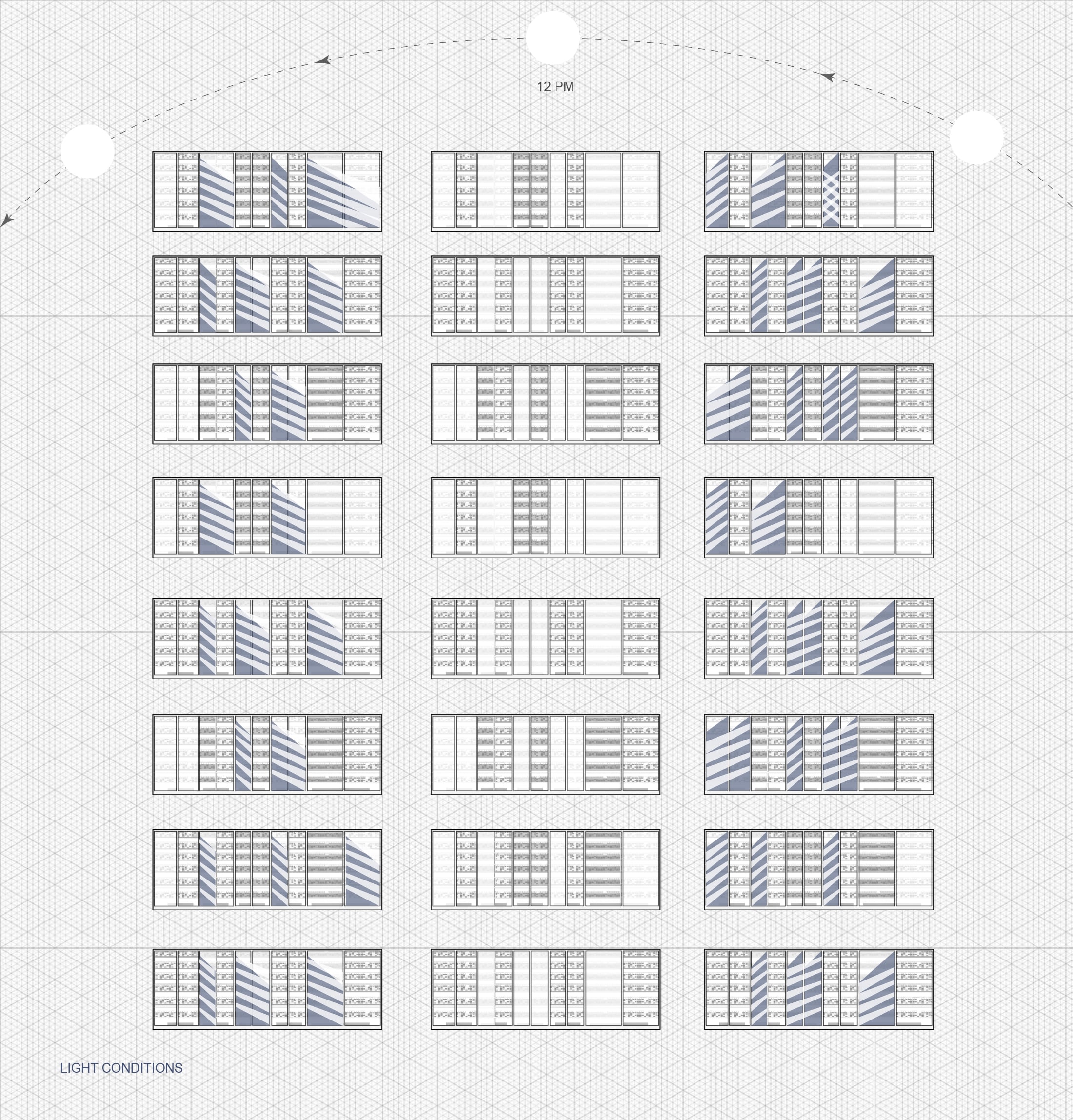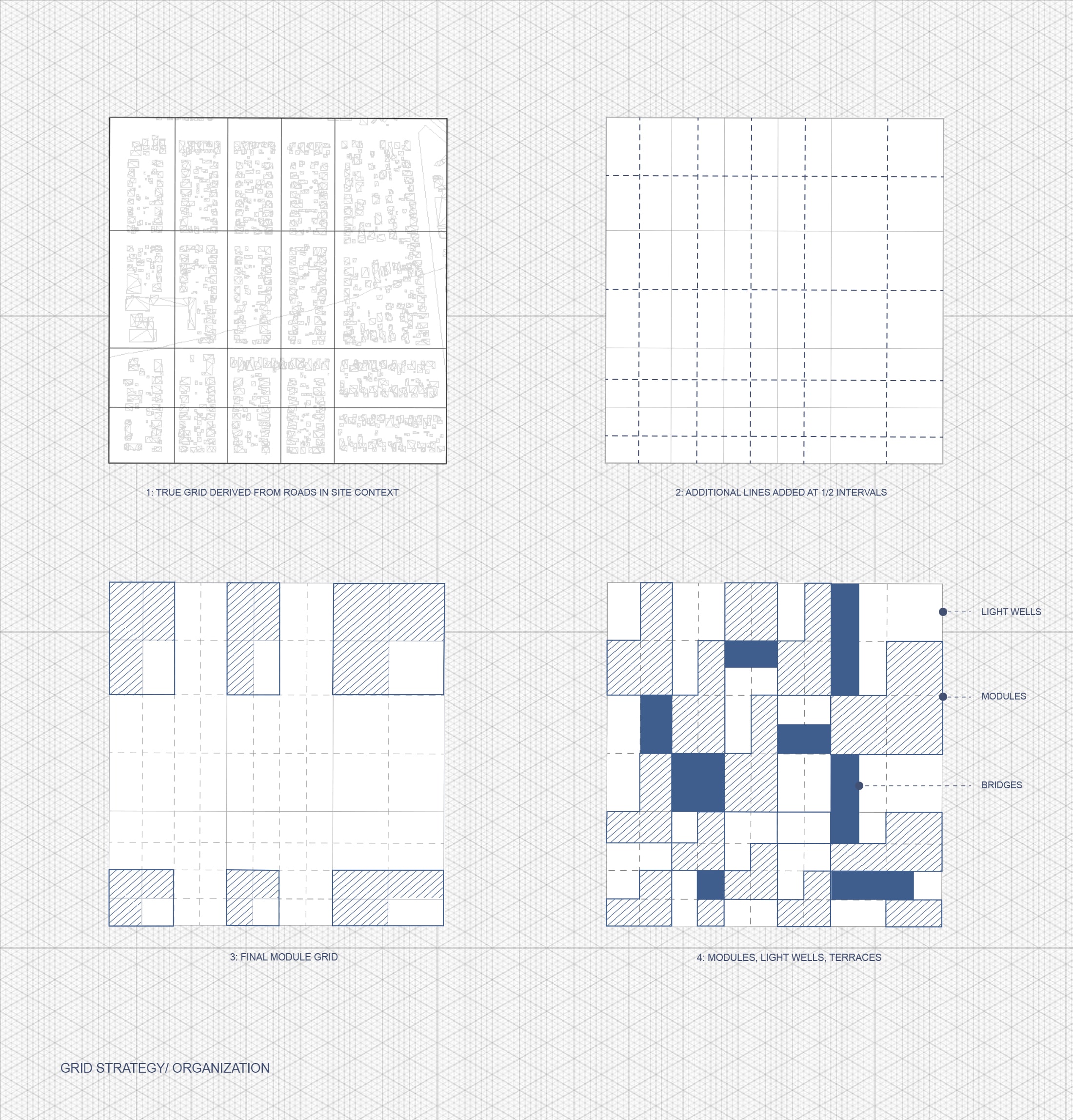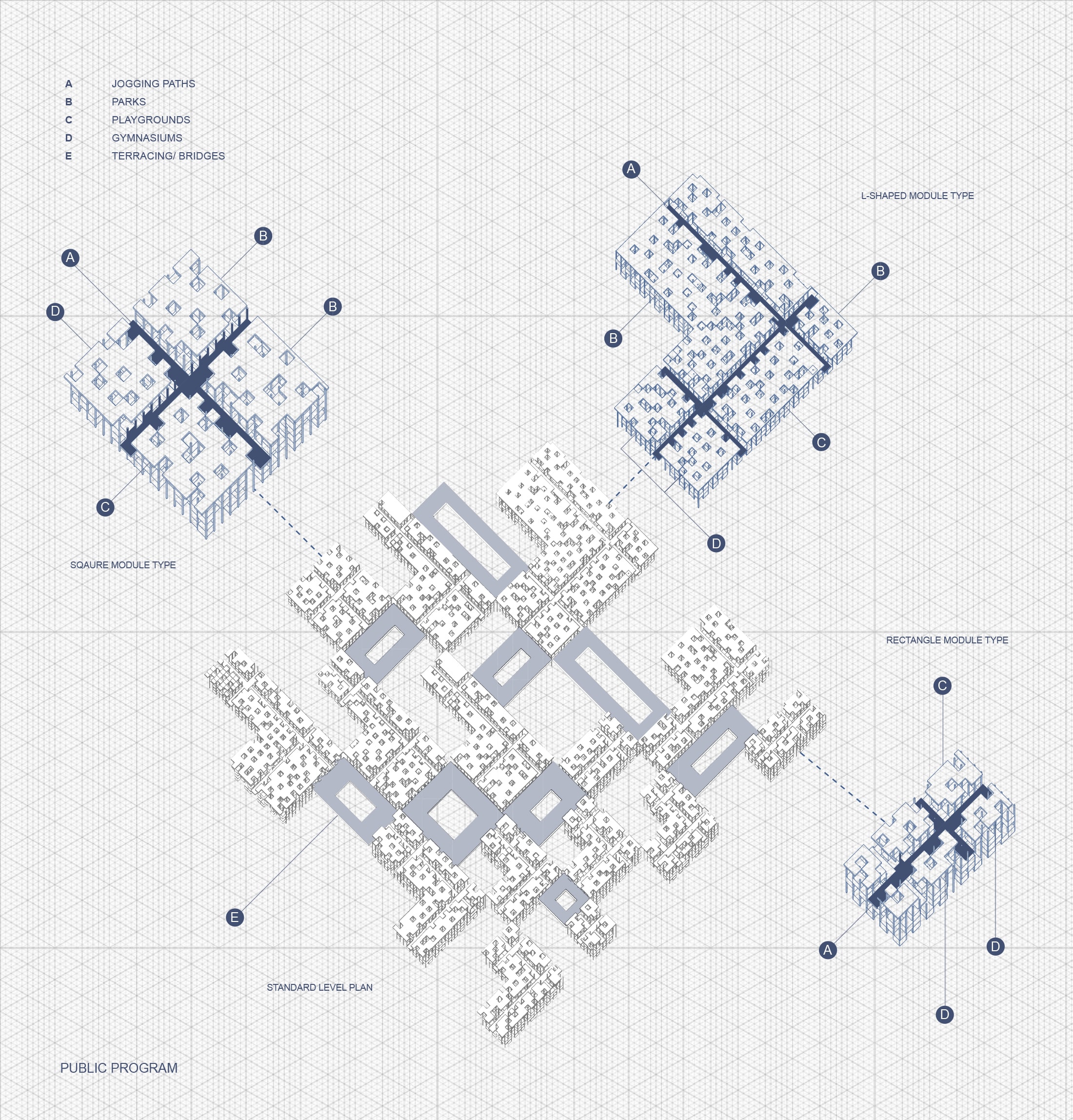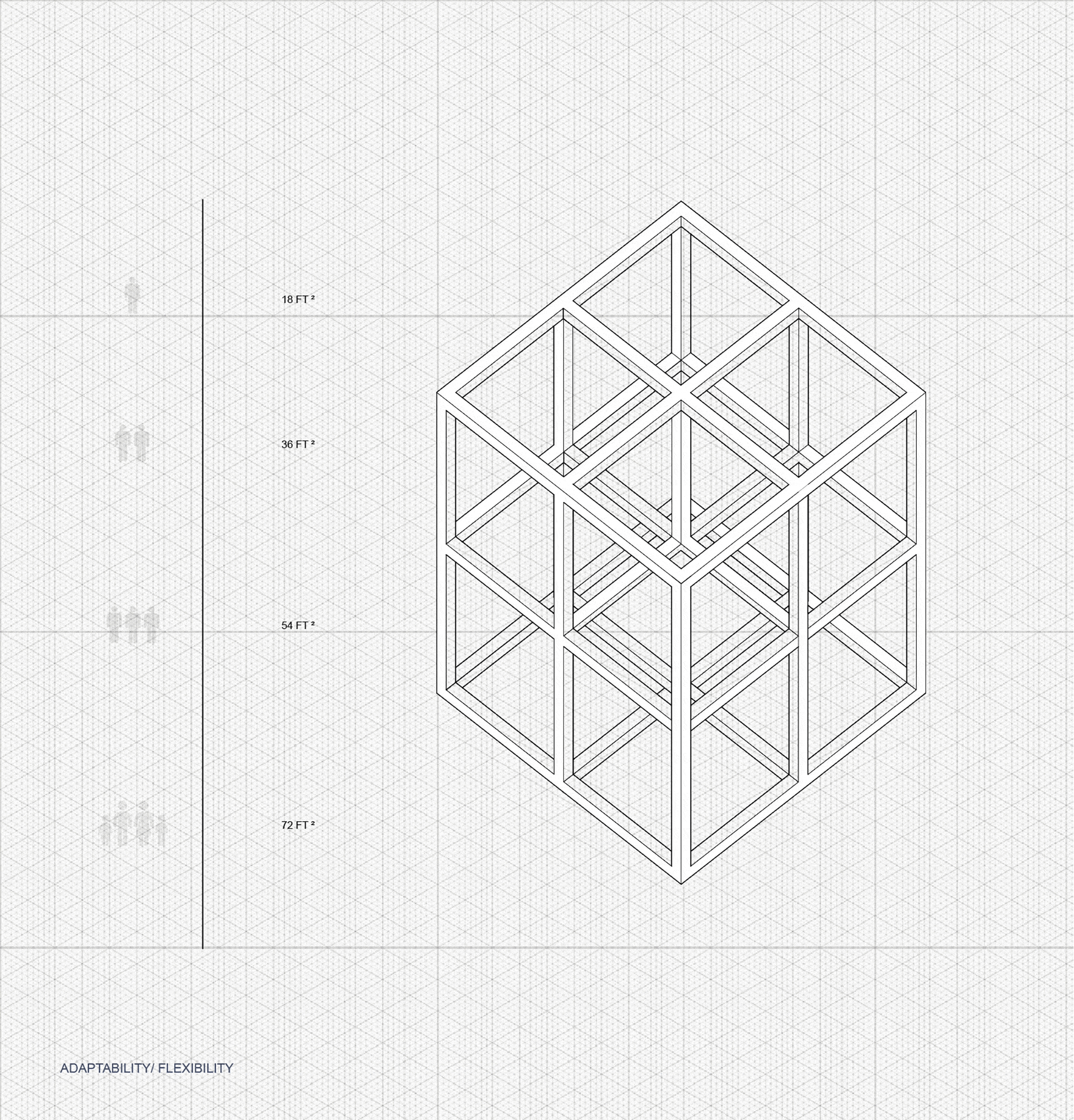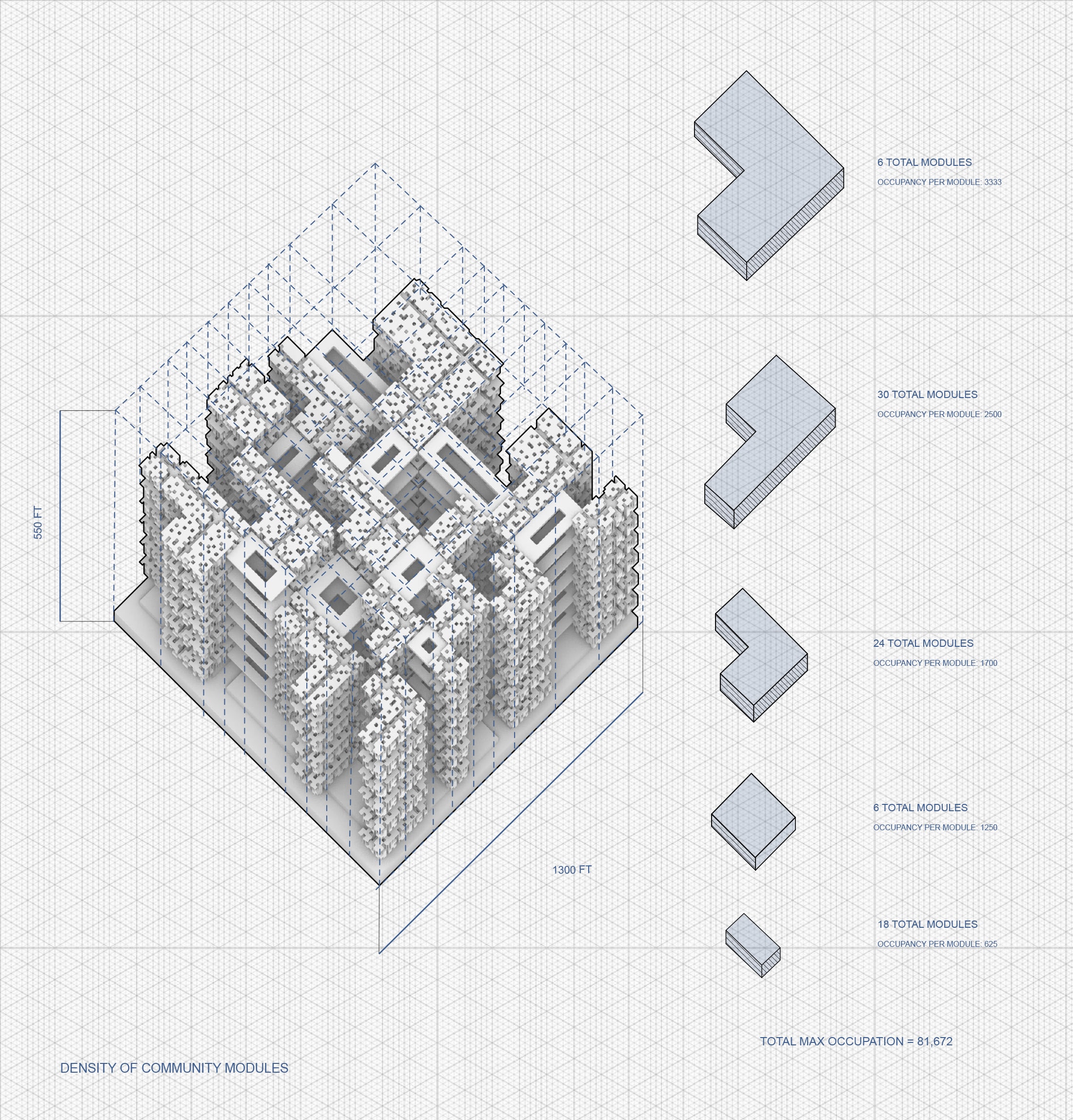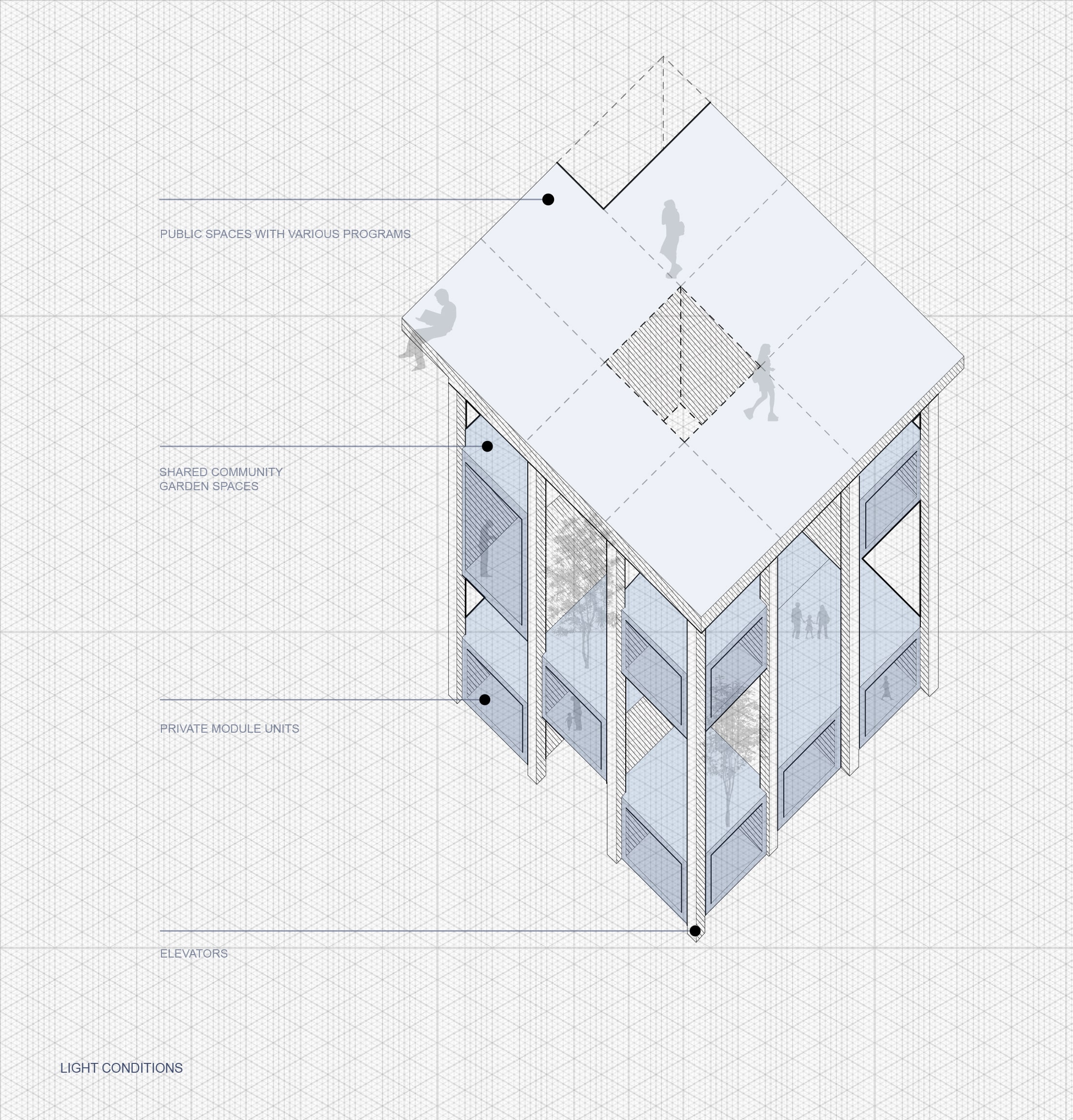Sky Villages
This proposal utilizes an algorithm to create a resilient city able to adapt to different occupancies through a megastructure system. Specifically, it aims to rehabilitate and reintegrate people back into society through temporary, modular communal housing. Drawing ideas from Fujimoto’s Serpentine Pavilion, I did this by creating a wireframe grid box derived from the surrounding context of Burbank. By using a grid for my ordering system to arrange my modules, the number and location of modules can be manipulated, accommodating the urban trend of high density and low income households in the area that my superblock resides in. The grid box that frames my site allows for flexibility by allowing the modules to attach to one another, adapting to the possible growing population and needs in the already densely populated area. Specifically, since the wireframe grid box acts like a track, this will allow the blocks to slide vertically and horizontally into different positions and lock into place. The grid is also designed to arrange the large modules so that they are interlock/ are orientated in ways creating bridged outdoor spaces for activities that would typically be considered private — blurring the boundaries between public and private and creating a sense of community. Not only does this create a sense of community and co-living, but it also increases the safety of the community through neighborhood watch since all of the outdoor space is shared. In terms of circulation around the site, all the modules can be connected through recessed walkways, encouraging people to meander around the site and interact with one another to access the main atrium that performs as a main public space. I plan on using the blocks resting on the base/ areas of public space of my structure for centers for vocational training, drug and rehab, mental health, etc.
